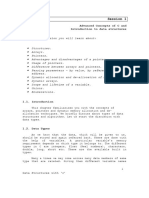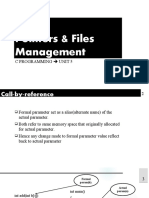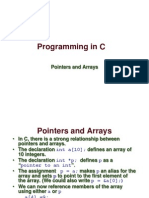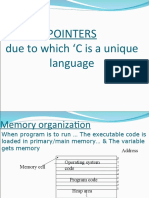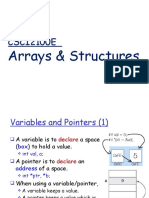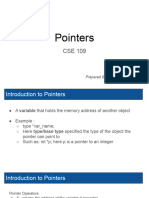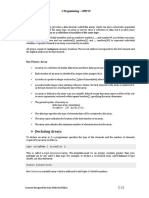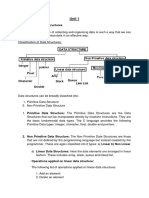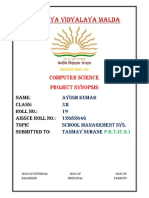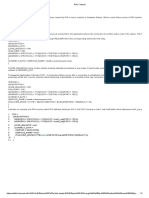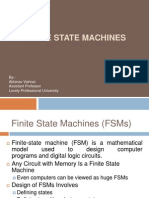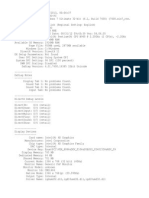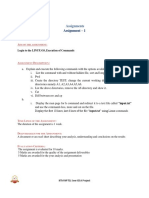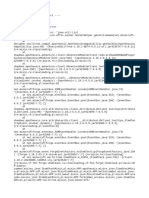0% found this document useful (0 votes)
43 views15 pagesLect 18 Pointers Arrays Structures
When an array is declared, the compiler allocates contiguous memory for all elements and the array name is a pointer to the first element. Pointers can be used to iterate through arrays using pointer arithmetic. Pointers can also be used to access structures and elements within structures can be accessed using the -> operator or (*pointer).name syntax. When an array of structures is declared, the array name is a pointer to the first structure in the array.
Uploaded by
praween kCopyright
© © All Rights Reserved
We take content rights seriously. If you suspect this is your content, claim it here.
Available Formats
Download as PDF, TXT or read online on Scribd
0% found this document useful (0 votes)
43 views15 pagesLect 18 Pointers Arrays Structures
When an array is declared, the compiler allocates contiguous memory for all elements and the array name is a pointer to the first element. Pointers can be used to iterate through arrays using pointer arithmetic. Pointers can also be used to access structures and elements within structures can be accessed using the -> operator or (*pointer).name syntax. When an array of structures is declared, the array name is a pointer to the first structure in the array.
Uploaded by
praween kCopyright
© © All Rights Reserved
We take content rights seriously. If you suspect this is your content, claim it here.
Available Formats
Download as PDF, TXT or read online on Scribd
/ 15













